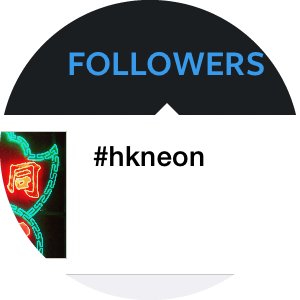(Originally published in Headline Daily)
Presented by M+ of the West Kowloon Cultural District Authority, the online exhibition - “NEONSIGNS.HK”- has come to an end. It is a well-received event; up till 30 June, over 4000 photos have been submitted from public. Furthermore, M+ will acquire such neon signs as Kai Kee Mahjong School and Sammy’s Kitchen, leading to a number of issues that need to be continued and deepened. These include representations of the physical objects, writing, discovery and studies of aesthetics of neon, its relationship with societies and modernisation, as well as re-representation of neon in various forms of text.
As a literary creator, I may be more sensitive about the textual re-representation of neon. As mentioned earlier in an article I wrote for M+, neon has made its appearance in Hong Kong’s literature, film, and music. One of these examples is It’s a Starry Night, a 80’s hits by the Tat Ming’s Pair. As a track that is over two decades old, it still sounds surprisingly fresh and even precisely captures the current situation. The lyrics picture a city of twinkling lights – a scene of resplendence – where the night is never dark. Glossed over by the illusion of prosperity, however, is a touch of sorrow. Such sense of beauty is but a fragile glass, which breaks into pieces upon a slight stab. “Please take a last glance at this glamorous city, / Then march forth. / With doubts deep down, / I fear this glittering city / has seen its last hurrah.” Read from today’s perspective, these are a portrayal of collective anxiety in our present time.
Oldies replay has become a new media trend. Played against the contemporary social context, these classic hits reincarnate across generations, which reminds me of two other singles by the Tat Ming’s Pair. Both of them carry a young and rebellious soul and depict the city’s night view, with descriptions of neon lights. The first is Angels on the Road (it is named after a feature film, a common practice of the Pair). Like It’s a Starry Night, it begins with a neon reference – “Dashing through the dark pitch streets / I wander around in pride / In my view / and half of the sky / are red neon lights.“ The other one, The Lost Night Train, is about young city wanderers. “Streaking through tons of neon lights / the night slowly flows / I’m already feeling cold and bleak / The endless outpouring in my eyes / is the ruthless hoodwink of loneliness / I’m out of my mind and control / All my barging have only taken me to nowhere.” There seems to be no longer any piece of lyrics as wonderful as these. All of them are penned by Keith Chan, who has great talents in writing about urban spaces and landscape while combining a sense of wandering with the sensibility of a city. Chan favours the city at night. His early works give off a hint of decadence that belongs only to the youth - the night walks in beauty; the relapse after indulgence in happiness. The lyricist by then had yet developed the mature approach in his later creation The Breakfast Group.
Literature exists not only in books but over street corners and pop music. As the saying goes, “Poetry and songs share the same origin.” I’d like to elaborate on a few poems, as a supplement to our discussion. Other than an imagery of desires in Cao Juren’s 1952 novel, The Hotel, neon also debuted in Hong Kong’s poems in the 50’s.
Conceived by modern poet Ma Boliang (Ma Long), North Point at Night opens with the following lines, “After the last tram passed in loneliness / the tiny light at the intersection in a distance went off / Wisps of neon lights, moist and clotted / stained the dazed vision between each eye.” In the subsequent parts arrive “the female dancers who were scattering and hurrying” and their slender feet produce “sound of padding breaking into the music of the night.” Apart from sound, there are depictions of colours and temperature - “The red in the shadows of light slowly matured.” Even in the ordinary North Point, there still runs an undercurrent of desire whenever neon is concerned, releasing a scent of intoxication and seduction. It is interesting to note that, after near half a century, there is another poem under the same title by Chan Chi Tak, who invented the following verses, “the burning neon signs retreated by turns, outside the window / there came the “Now”. Now showed a sudden outburst of laughter / and an abrupt roar of silence. The cheers tuned down / my friend began to whimper. Is that a shock of sadness / or an age-old tradition?” While the trams still endure, neon signs are ceaselessly disappearing. North Point isn’t the same anymore. This poem was written in 2004, and in the same year, if time is what creates a montage, Yesi composed Cityscape, “The city is always the colour of neon / Secret messages hidden there / The pity is only, you’re wearing a mask / No way to know if it’s you that’s speaking”. The shining neon lights and the masks that cover them have said all about the explicitness and tacitness of the city, and have recalled memory of SARS.
Text: Lawrence Pun

